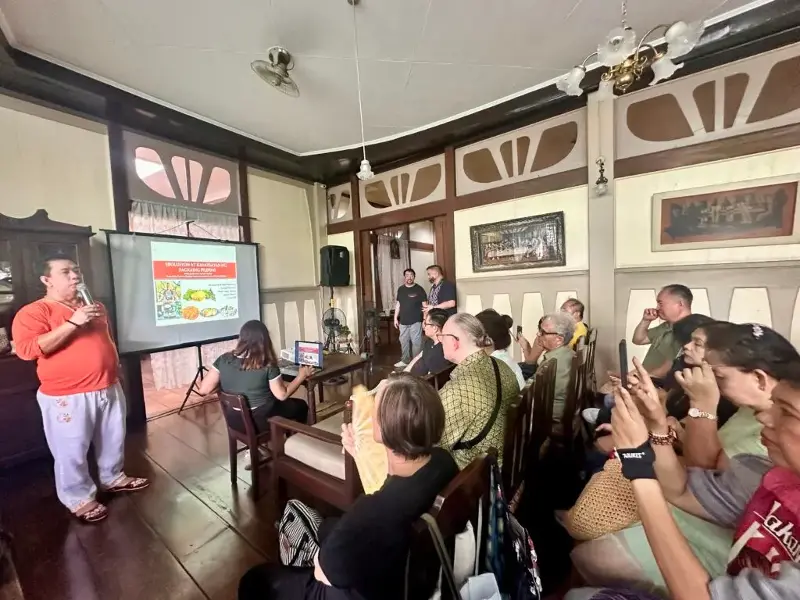Genalyn Evangelista

The air in Manila’s Bahay Nakpil-Bautista hummed with anticipation on June 21, 2024. Almost fifty people from across the Philippines gathered to hear Professor Jaime Corpuz, the driving force behind Bahay Makabayan, unravel the rich history of Filipino food. The old house, with its gentle breeze and the melancholic strains of kundiman playing softly in the background, felt like a perfect setting to explore how our food heritage isn’t just about preserving the past, but about keeping it alive and changing with the times.
Our food journey began long before the arrival of colonizers. The precolonial era, a time when the archipelago earned the nickname “Spice Island” thanks to the introduction of spicy flavors by Arab traders, showcased the ingenuity of Filipino palates. This era saw a reliance on the bounty of the land and sea, with staples including Chinese-inspired grains and root crops alongside indigenous dishes like grilled Tambalolo (fish) and Pinais, steamed and delicately wrapped in banana leaves.
The Spanish colonial era (1521-1898) introduced new cooking techniques and ingredients, like sauteing and European spices, while simultaneously creating a social divide where the elite employed professional chefs. Iconic dishes such as Sinigang, Paksiw, and Adobo emerged from this period. Brief French influence in 1899, alongside continued popularity of local favorites, highlighted the ongoing cultural exchange. The American period (1899-1946) brought processed foods and “creolization,” a fusion of old and new resulting in dishes like lumpiang ubod and rellenong bangus. World War II’s Japanese occupation drastically altered food availability, necessitating resourcefulness and leading to the prevalence of simpler dishes. Post-war, American influence resurged with fast food and processed foods, while the 1950s and 60s saw the rise of pulutan (bar snacks). The modern era showcases the continued evolution with the flourishing of street food, the diverse regional variations of Sinigang, and the adaptable use of sawsawan (dipping sauces).
This food evolution is not happening in isolation. Advocates like Roberto Encarnacion of the ASEAN Heritage Parks (AHP) champion the preservation of Filipino food heritage. In Malolos, near Aguinaldo’s former palace, restaurants are actively reviving historical dishes like pinaso (caramelized biscuit dessert), linking the past directly to the present.
The gathering in the Bahay Nakpil-Bautista was a powerful reminder: protecting our food heritage isn’t just about preserving old buildings. It’s about safeguarding the recipes, keeping the flavors of our history alive, and creating a vibrant food legacy for future generations.
##########
———————–The article provided is authorized for use, and represents solely the author’s personal opinions. Please contact us in the event of any potential infringement.
